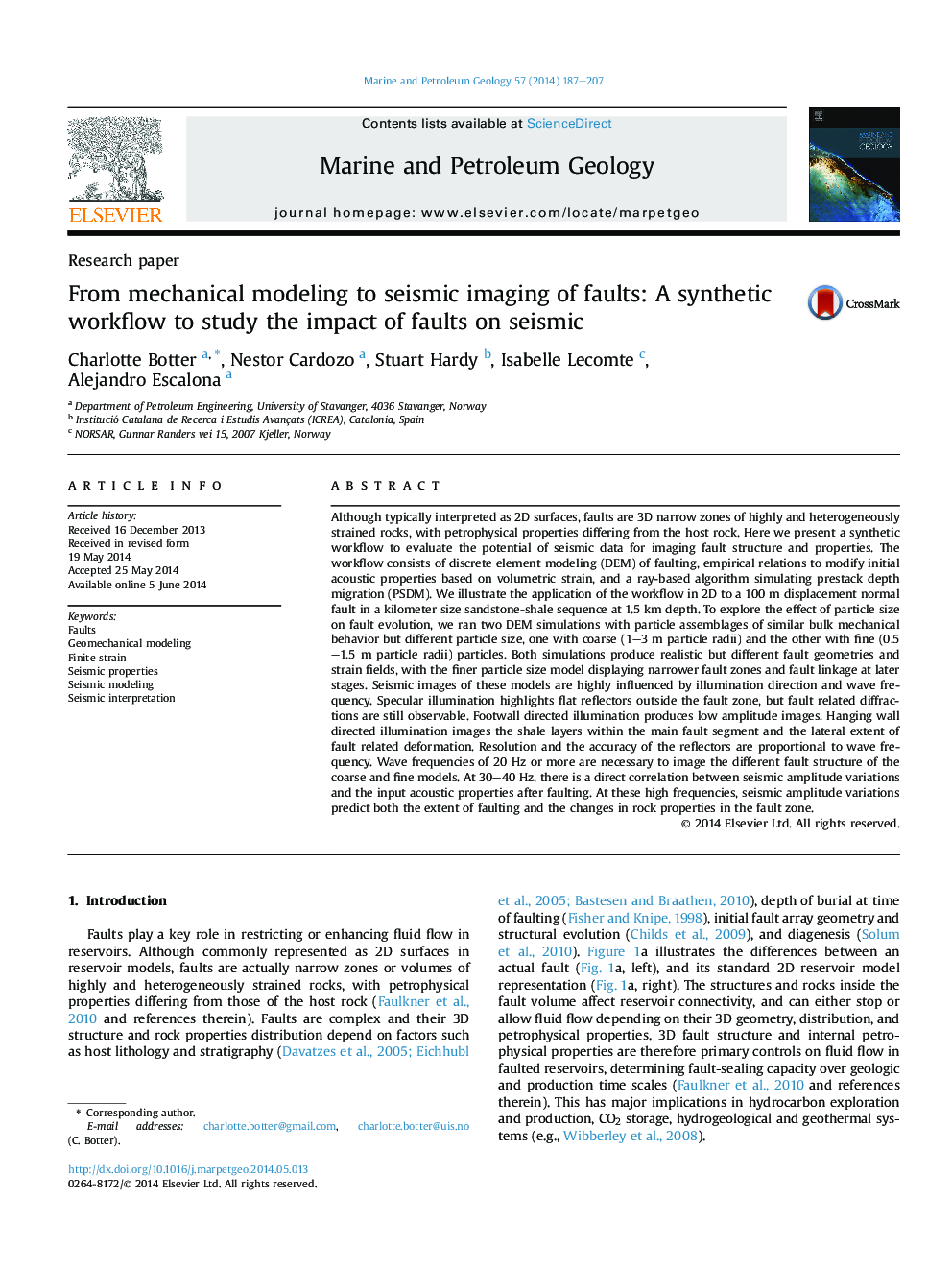| کد مقاله | کد نشریه | سال انتشار | مقاله انگلیسی | نسخه تمام متن |
|---|---|---|---|---|
| 6435343 | 1637167 | 2014 | 21 صفحه PDF | دانلود رایگان |
- Discrete element modeling of faulting.
- Elastic properties changes due to finite strain.
- Prestack depth migration images of mechanical fault models.
- Seismic interpretation and characterization of faults.
Although typically interpreted as 2D surfaces, faults are 3D narrow zones of highly and heterogeneously strained rocks, with petrophysical properties differing from the host rock. Here we present a synthetic workflow to evaluate the potential of seismic data for imaging fault structure and properties. The workflow consists of discrete element modeling (DEM) of faulting, empirical relations to modify initial acoustic properties based on volumetric strain, and a ray-based algorithm simulating prestack depth migration (PSDM). We illustrate the application of the workflow in 2D to a 100Â m displacement normal fault in a kilometer size sandstone-shale sequence at 1.5Â km depth. To explore the effect of particle size on fault evolution, we ran two DEM simulations with particle assemblages of similar bulk mechanical behavior but different particle size, one with coarse (1-3Â m particle radii) and the other with fine (0.5-1.5Â m particle radii) particles. Both simulations produce realistic but different fault geometries and strain fields, with the finer particle size model displaying narrower fault zones and fault linkage at later stages. Seismic images of these models are highly influenced by illumination direction and wave frequency. Specular illumination highlights flat reflectors outside the fault zone, but fault related diffractions are still observable. Footwall directed illumination produces low amplitude images. Hanging wall directed illumination images the shale layers within the main fault segment and the lateral extent of fault related deformation. Resolution and the accuracy of the reflectors are proportional to wave frequency. Wave frequencies of 20Â Hz or more are necessary to image the different fault structure of the coarse and fine models. At 30-40Â Hz, there is a direct correlation between seismic amplitude variations and the input acoustic properties after faulting. At these high frequencies, seismic amplitude variations predict both the extent of faulting and the changes in rock properties in the fault zone.
Journal: Marine and Petroleum Geology - Volume 57, November 2014, Pages 187-207
